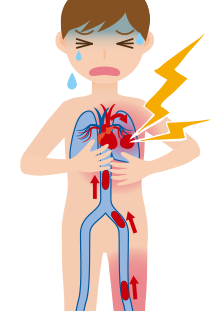The best questions often stem from the inquisitive learner. As educators, we love, and are always humbled by, those moments when we get to say, “I don’t know.” For some of these questions, you may already know the answers. For others, you may never have thought to ask the question. For all, questions, comments, concerns, and critiques are encouraged. Welcome to the Kids Korner.
Question 1: What is the incidence of pulmonary embolism (PE) in pediatric patients?
As expected, PE is a very uncommon diagnosis in children. Before 1962, there were fewer than 50 cases of PE reported in the medical literature.1 When specified, we’ll address the rate of venous thromboembolism (VTE, defined as deep vein thrombosis [DVT] and PE) versus PE alone. Stein et al evaluated the incidence of VTE in infants and children from a national database that sampled approximately 8 percent of non-federal hospitals in the United States and about 1 percent of the discharges.1 These data are from patients admitted to the hospital, so the overall numbers of those presenting to the emergency department are likely much lower.
This National Hospital Discharge Survey (NHDS) found thromboembolism diagnosis (PE plus DVT) incidence to be 4.9 per 100,000 children per year. For DVT alone, the incidence was 4.2 per 100,000 children per year. For PE, it was much lower, at 0.9 per 100,000 children per year. Interestingly, each of these incidences was much more common in the 0–1 year age group and 15–17 year age group when compared with the 2–14 year age group. The authors found that in the 0–1 year age group, the incidence of diagnosis was associated with an indwelling catheter in 89 percent of cases. In the 15–17 year age group, females were twice as likely to experience thromboembolism, with an increased incidence in both pregnant females and females on birth control. Overall, the incidence of VTE was extremely low.
Another study by van Ommen et al was data from a prospectively collected Dutch database of patients 18 years of age or younger.2 The incidence of VTE in this population was 0.14 per 10,000 children per year. There were 99 cases of VTE, with 47 of these cases in neonates and 94 percent (44 of 47) of those neonates with DVT from an associated indwelling catheter. Excluding neonates, the incidence of VTE in children was extremely low, at 0.5 per 10,000 children. The authors reported only 10 cases of PE over two years in a pediatric population of about 3.6 million. The authors stated that the incidence of PE in the adult population during this time period was 1–2 per 1,000 adults per year.
A final study by Agha et al retrospectively evaluated the incidence of PE in children (younger than 21 years of age) presenting to a pediatric emergency department and found it to be 2.1 per 100,000 visits.3 The median age of patients was 15 years, with 76 percent presenting with high-acuity Emergency Severity Index levels (1 and 2), suggesting the majority appeared clinically ill. The most common risk factors were a BMI 25 or above, oral contraceptive usage, and history of previous PE.
Summary
While pulmonary embolism may commonly be included in a practitioner’s differential diagnosis, PEs in children are extremely uncommon.
 Dr. Jones is assistant professor of pediatric emergency medicine at the University of Kentucky in Lexington.
Dr. Jones is assistant professor of pediatric emergency medicine at the University of Kentucky in Lexington.
 Dr. Cantor is professor of emergency medicine and pediatrics, director of the pediatric emergency department, and medical director of the Central New York Poison Control Center at Upstate Medical University in Syracuse, New York.
Dr. Cantor is professor of emergency medicine and pediatrics, director of the pediatric emergency department, and medical director of the Central New York Poison Control Center at Upstate Medical University in Syracuse, New York.
References
- Stein PD, Kayali F, Olson RE. Incidence of venous thromboembolism in infants and children: data from the National Hospital Discharge Survey. J Pediatr. 2004;145(4):563-565.
- van Ommen CH, Heijboer H, Büller HR, et al. Venous thromboembolism in childhood: a prospective two-year registry in the Netherlands. J Pediatr. 2001;139(5):676-681.
- Agha BS, Sturm JJ, Simon HK, et al. Pulmonary embolism in the pediatric emergency department. Pediatrics. 2013;132(4):663-667.
Pages: 1 2 | Multi-Page





No Responses to “How Common is Pulmonary Embolism in Pediatric Patients?”